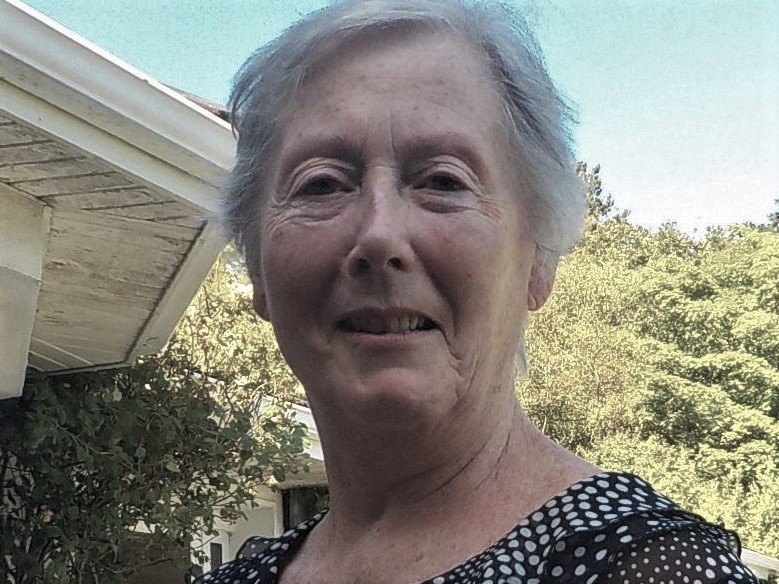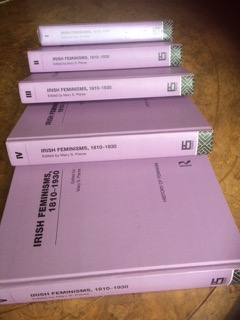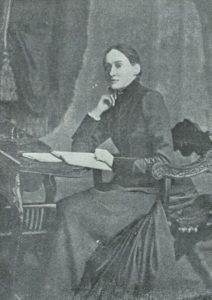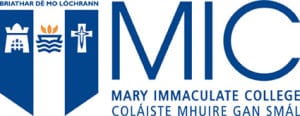Research Pioneers 10: Mary S. Pierse
Research Pioneers 10 – Mary S Pierse
Tweet
Mary S. Pierse edited, in 2010, the pioneering Irish Feminisms, 1810-1930 (Routledge). In these five volumes, she brought together 180 documents from a variety of genres that invite enticing and creative connections between historical documents, periodical press contributions, and literary texts. ‘The scale of editorial endeavour here’, Margaret Kelleher’s review of the collection notes, ‘was clearly immense and the achievement, including imaginative selections and meticulous textual detail, is warmly to be welcomed’ and goes on to refer to the timeliness of Pierse’s project: ‘Read in the context of our contemporary economic and social crises, the relevance of many of the writings collected by Pierse (including political manifestoes, crusading journalism, new educational agendas, as well as poetic and fictional reimaginings of personal and social responsibility) appears even more compelling.’ Among those many Irish women writers whose works Pierse’s retrieval efforts draws renewed attention to are M. E. Francis, Rosamund Jacob, Katherine Cecil Thurston, Rosa Mulholland and Nora Hopper.
This is the tenth interview in the Research Pioneers Series conducted by Anna Pilz & Whitney Standlee. Our first interview with John Wilson Foster is available here, Heather Ingman and Clíona Ó Gallchoir is here, James H Murphy is here, Heidi Hansson is here, Lucy Collins is here, Gerardine Meaney here, Margaret Kelleher here. David Clare, Fiona McDonagh and Justine Nakase here and Elke D’hoker here.

In addition to her contribution to Irish women’s literary, social, and political history, Pierse has published widely on George Moore’s work, Franco-Irish artistic connections, contemporary Irish women writers, Kate Chopin, Arthur Conan Doyle, and poets Cathal Ó Searcaigh and Dennis O’Driscoll. She is editor of George Moore: Artistic Visions and Literary Worlds (2006) and co-editor of George Moore’s Paris and his Ongoing French Connections. (2015)., France and Ireland: Notes and Narratives (2015),. France and Ireland in the Public Imagination(2014), George Moore and the Quirks of Human Nature (2014). – She wrote the “George Moore” entry for The Encyclopedia of Victorian Literature (Blackwell:2015).
Organiser of the first trilingual International Moore Conference (2005) she has served as a board member at the National Centre for Franco-Irish Studies and on editorial boards/scientific committees for publications in France and Spain. Mary Pierse has also taught on undergraduate programmes in the Department of English, and on postgraduate courses in Women’s Studies at University College Cork, where she was IRCHSS Government of Ireland Post-Doctoral Research Fellow from 2004 to 2006.
Q: What first drew you to study what might be termed ‘niche’ or ‘forgotten’ Irish literary works?
MP: I think it dated from the serendipitous occasion when I received a totally unexpected invitation to consider the possibility of compiling documents of Irish Feminisms. That was a challenge that, however daunting, just could not be refused and from my first survey of potential inclusions, I was captivated and enthusiastic, while surprised and exhilarated that there was so much rich material from which to draw.
Q: The five volumes of Irish Feminisms 1810-1930 was a mammoth task that continues to encourage and inform researchers 11 years later. With retrospect, the degree of foresight you displayed in compiling these volumes becomes increasingly clear. Irish Feminisms comprises 180 works in total, including writings by a number of authors who remain critically understudied (Ethna Carbery, Susan Mitchell and M. E. Francis, for example). Tell us the story of how you came to conceptualise these volumes and choose the works reproduced in them.

MP: Conceptualisation of the volumes developed slowly and only in the light of what was discovered in a long and wide trawl through library catalogues in Ireland and Britain, concentrating on the period from 1800 to 1930. I sought out texts that were by or about women, in and from Ireland, and then later to group and balance the variety. It was important to range more widely than the ‘usual suspects’ and to locate engagement and expression that mirrored reality and/or the felt needs of the writers. Given the complex history of Ireland, it was inevitable that politics and religion would loom large, as would home rule and suffrage, land war, poverty, and social involvement, and with differing slants. When it came to dividing the facsimile reproductions into separate volumes, the thematic titles suggested themselves and the centrality of those major concerns dictated content. Arrangement in chronological order within each volume allows assessment of progress, and its absence, over time.
Q: Can you recall a particular ‘Eureka moment’ from the archives?
MP: Absolutely, and with much regret that the publishers felt that it could not be reproduced in the Irish Feminisms volumes. This was a handmade and handwritten concert programme from 1923, it was small, fragile, yellowing and crumbling, and, remarkable because it was for a prison concert organised by women prisoners in ‘A’ wing of Kilmainham gaol. The cover is decorated by the sketch of a flower; the items announced were dramatic presentations, recitation, solo and choral songs, dances, acknowledgment of the producer, and a final note that ‘A dance will follow’. The elegance and arrangement reflect an incredible and indomitable spirit, and it is a powerful challenge to political forces that sought to denigrate those women.
Q: Irish Feminisms includes a noteworthy contingent of writing by male authors. What do men’s voices and opinions add to these volumes and to our recovery efforts as researchers into Irish women’s writing more generally?
MP: The voices of men enrich the backdrop to a period, both furnishing a timely reminder of particular restrictions on women’s lives and opportunities, and also underlining-the existence of joint endeavours towards human freedoms by, and for, both men and women. Such evidence is a bulwark against stereotyping of one era or class or location as being uniformly conservative or revolutionary. As is the case for women, the range of male opinion is extensive, the genres vary, and there are modulations which can reflect the original target audiences and the prevailing societal views. Affirmation or rejection of women’s rights by male historical figures could suggest possible areas in which women’s writing has been less frequently recovered, whether that be related to industry, labour agitation, art, sport, health, or politics of every shade.
Q: Across the five volumes, you include full texts of four novels that speak, in particular, to the period 1880 to 1920: M.E. Francis’ Miss Erin (1898), Rosa Mulholland’s The Return of Mary O’Murrough (1908), Katherine Cecil Thurston’s Max (1910), and Rosamund Jacob’s Callaghan (1921). What drew you to these texts in particular and what were the other possible contenders for space in the volumes?
MP: M.E. Francis and Rosa Mulholland were remarkably prolific writers from comfortable and cultured Irish backgrounds whose books were chosen because they feature feminine action and courage while presenting a range of injustices suffered by women. Miss Erin manages to insert young Erin into the matters of nationalist publications, evictions, land war, power of clergy, education, and Anglo-Irish relations. The concerns are contemporary and not enveloped in any Celtic Twilight mist. That is the case in The Return of Mary O’Murrough too where harsh reality of exile, emigration and the role of women challenge perceptions and precepts.
Far from land wars and poverty, Irish national identity is purposely and positively propounded in Max, making that text additionally interesting as it glides confidently through gender roles, cross-dressing, bohemian Paris, restrictions on women, and the trajectory of artistic Max/ine. Max is very much a book of the 20th century, as is Callaghan wherein Frances Morrin’s independent choices regarding activism, religion, marriage and suffrage are those of a strong feminist.
Amongst several texts omitted were Grania (Emily Lawless), The Silver Fox (Edith Somerville),and A Royal Democrat (by 13-year-old Alice Milligan). Like so many more, they should be read!
Q: Apart from the five-volume collection Irish Feminisms, 1810-1930, you are best known as a scholar of George Moore. Your work invites scholars, and scholars of Irish literature particularly, to view Moore in the light of his feminist agenda. How has this type of research into the juncture of male author/feminist writing proved productive to your research? And how might it be explored fruitfully in the future?

MP: I have not looked much into that juncture although I became sensitised through Moore’s alertness to the status of women and to injustice in society. In rather different genres, I found James Connolly and Hall Caine most interesting, and investigation of their contributions would surely bear fruit. Much has been written about the joint campaigns of couples such as the Haslams, Sheehy-Skeffingtons and Cousins – maybe it is time to seek out other such cooperative efforts?
Q: You have demonstrated your ability to analyse texts using a range of interdisciplinary tactics, for example by comparing and contrasting English and Irish language works and translations, literary and non-literary forms of writing, and literature and fine art. What do such multilinguistic and intertextual explorations have to offer us as researchers? What has surprised or engaged you most in the course of this type of research?
MP: The intersection, linkage and cross-fertilisation between the sister arts expand our views far beyond the boundaries of any one form, and can illuminate and explicate images and situations. Although the label of ‘arti sorelle’ long predated the nineteenth century, it is noticeable in this period and around the fin-de-siècle that the approach of creative artists reinforces that understanding: Some composers gave literary titles to their music (Bluebeard’s Castle, L’Après-midi d’un faune), thereby making available a literary or historical interpretation; influenced by ‘ut pictura musica’, certain painters sought ‘pure’ art, as music was understood as one such art, while others bestowed musical titles on their canvases (Whistler’s ‘Nocturnes’, Matisses’s ‘Jazz Suite’); writers sometimes chose to imitate a melodic line or to paint word-pictures directly related to paintings (George Moore experimented with both). All were in pursuit of understanding their own art form, and in any possible magnification of its dimensions –something that may provide us with further insights and keys.
Resistance of Victorian society to the ‘French novel’ tells much about societal structure and points to the need to explore what was actually in such books, and how their authors and French people reacted, thus opening up undercurrents and agendas in more than one literature and tongue; An Irish-language lesson, reproduced in Irish Feminisms (Vol. IV, 152), establishes a new norm for women, one not echoed in English-language media of the time. Can the small differences between what Samuel Beckett wrote in French and his own English translations inform us? It is interesting to see dissimilar approaches in the style, language and attitude of Chinese novels now translated into European languages. That kind of exploration is tempting, enlightening and often rewarding.
Q: In your opinion, does the category of ‘Irish woman writer’ need to exist?
MP: I think it can be useful as a label for writers in times past. However, it really does not belong in the twenty-first century when the category ‘Irish writer’ is quite sufficient and ‘woman writer’ is rarely intended as a laudatory classification. Yet, when today’s writing is analysed in future years, it is quite possible that trends and subject matter may be identified predominantly with writing by women – in which case, the category may again become retrospectively relevant.
Q: Kelleher pointed to the contemporary relevance of the texts that you’ve meticulously assembled from newspapers, the periodical press, historical documents, and literary sources. As she noted in 2012, ‘In our time, issues of social, legal, and economic equality are as pressing as ever and, perhaps even more than ever, the need to articulate new forms of social activism and engagement.’ Considering our current moment of a global pandemic, political struggles for equality, the on-going #MeToo movement, and the forecast of an economic depression, how do you see Irish Feminisms speaking to our times now?
MP: While the constituent parts of Irish Feminisms show a depressing similarity between the nineteenth and twentieth-century problems and prejudices, and those of today, the resilience, ingenuity and determination shown in earlier years have borne fruit and gains have certainly been made in status, opportunity, employment, education and self-belief. Irish Feminisms will not shout out a rallying call, but its pages can certainly speak to those who go looking for inspiration from times past.
Q: As Kelleher notes in her review, Irish Feminisms is an expensive work to purchase and, as such, has remained a collection to be accessed in person in libraries. In the current Covid-19 climate and with what is almost certain to be a severe economic recession looming, it seems to us that now more than ever we need easy and affordable online access to a sweeping work such as this. Are there any plans to reissue these volumes in the near future in a format that would help them to reach a wider audience of researchers?
MP: The target market for publishers of such major multivolume series has always been the university and national libraries in every continent. Despite requests to make individual volumes or single items available for purchase, it does not seem likely in the short term. However, there is access to the volumes online through subscribing university libraries and that, to some limited degree, allows more researchers to study the content.
To reference this blog:
Harvard style:
Pierse, Mary S. (2020), ‘Research Pioneers’, Interviewed by Anna Pilz and Whitney Standlee for Irish Women’s Writing (1880-1920) Network, (July, 2020). Available at: https://irishwomenswritingnetwork.com/2020/07/17/research-pioneers-10-mary-pierse/ (Accessed: Date)
See our full guide here.



